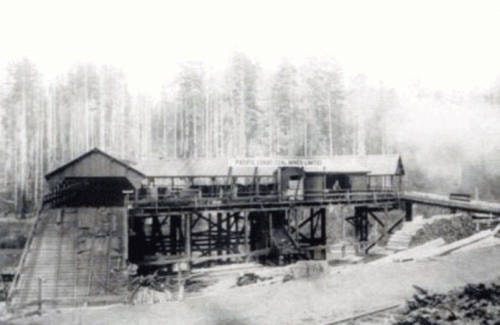Shotlighter David Nellist who placed the fatal charge had been married for only two weeks.
A century ago, 19 men died in the flooding of South Wellington’s PCC Mine. Today, thanks to Helen Tilley, we know something about them as individuals — fathers, sons and brothers — they’re no longer just statistics.
John Hunter was 42, a widower with three sons, born in Scotland. He’d been in Canada two years and in the Nanaimo district for all of that time. Frank Hunter, who was also killed in the flood, was his son. John’s body was recovered May 6, 1915.
William ‘Tackle’ Irving was born in England and was 51 years of age. He’d come to Canada four years previously and had lived in South Wellington and worked at the mine for three years. He had a father and mother in England. His body was recovered on May 3, 1915.
Olaf Lingren – Olaf was born in New Zealand in 1879 and had been in Canada six years. He’d only been in South Wellington two days when he was killed. He was single and had previously lived in Vancouver. His body was recovered on May 3, 1915.
Frank Marvella was a single man born in Italy and 20 years old. He’d come to Canada two years previously and had worked at the [PCC] for one year. His body was recovered on May 8, 1915.
Grigore H. Mavros was single, age 26 and born in Greece. He’d only lived and worked in the district for seven months. His body was recovered on May 19, 1915.
Robert Miller had been born in Scotland and was 51. His wife was Margaret. He’d come to Canada five years before and had worked at the mine for that time. He’d been a mason before coming to Canada. Robert’s body was recovered on April 26, 1915.
David Nellist had been married for only two weeks. Age 54, he was born in Yorkshire, Eng. and had a son living in Vancouver. He came to Canada 21 years before and had only worked at the mine for five months, having previously lived in Cumberland and Vancouver.
David was a shotlighter and it was his job to light the charge that the miner had placed in a drilled hole in the coal face. It was David’s responsibility to check that the miner had drilled the hole and placed the charge properly. It was not his job to determine how close the miners were working to the abandoned workings of the Southfield Mine and he and the miners followed the directions of the managers and draftsmen as to where to dig.
His body was recovered on May 2, 1915 and David was buried in Sandwick, B.C. which is now part of Courtenay.
John Stewart was married, 26 years old, born in England in 1888. John had been a coal miner since the age of 14 in England. He’d come to Canada two years and nine months previously. John resided in South Wellington and had worked at the [PCC Mine] since then. John’s body was recovered from the mine on May 4, 1915.
Thomas Watson was a married man born in England and 37 years old. He’d come to Canada eight years previously and had lived in the Nanaimo area since. Thomas had been employed at the mine for four months. Thomas, almost out safely, [turned back] to help manager Foy warn the men to get out and, in doing so, they were both drowned.
It was reported that Thomas was working his first shift in the mine that day. His was the first body recovered, on April 19, 1915.
Samuel Wardle was a married man, aged 50, born in Scotland. He’d come to Canada four years previously, had lived in the Chase River area for three years and had worked at the South Wellington Mine for one year. Samuel and his wife Lucy had four children. His body was recovered May 10, 1915.
There you have it, postage stamp biographies of 19 men who lost their lives due to human error. Several of them would have lived had they not rushed below to help their workmates yet their heroism has been all but forgotten. A century later we have just the news accounts of the day and the official reports of the disaster. Now, thanks to Helen Tilley’s dedication, the PCC’s lost miners are no longer just statistics but real life human beings — men, young and old, with families and friends who loved them.
They’ve been remembered in another way, too. Sam Wardle’s great grandson is well-known blues/guitarist and songwriter David Gogo whose family lives in South Wellington. In 2009 David won a Juno nomination for best song for his touching ballad, “She’s Breaking Through.”
It tells the story of that tragic morning in February 1915 when flood waters from the abandoned Southfield workings poured into the PCC Mine and drowned 19 miners who’d put their trust in management. You can hear and watch David perform this haunting tribute simply by Googling his website or look it up on YouTube.
Listen carefully to the lyrics. They tell quite a story.
